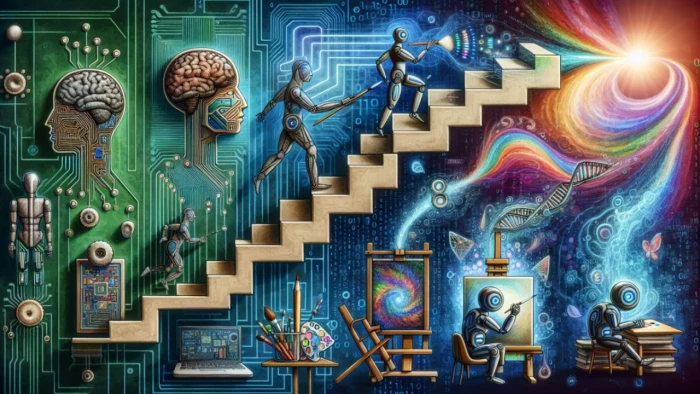

Artificial Intelligence (AI) is no longer just a tool for tech companies—it’s becoming an essential creative partner for artists worldwide. From composing symphonies to designing futuristic paintings, AI is helping creators push the boundaries of imagination. What was once thought impossible—machines making art—is now shaping the future of music, visual art, and storytelling.
Musicians are experimenting with AI-powered platforms to generate melodies, harmonies, and even full-length songs. Tools like AIVA, Amper Music, and Soundraw allow artists to feed inputs such as mood, genre, or tempo, and the AI generates original compositions. Some use AI to overcome creative blocks, while others blend machine-generated tracks with human artistry to produce innovative soundscapes.
Even popular musicians like Taryn Southern and David Bowie’s estate have explored AI-assisted compositions, proving that the technology can complement—not replace—human creativity.
AI has revolutionized painting and digital art. Platforms like DALL·E, MidJourney, and Runway ML empower artists to create surreal, photo-realistic, or abstract artworks by simply describing their vision in words. AI-generated art is making waves in galleries and online marketplaces—sometimes selling for thousands of dollars.
For example, in 2018, an AI-generated portrait called Edmond de Belamy sold at Christie’s for over $432,000, highlighting how collectors value AI-driven art.
Writers are also embracing AI as a creative collaborator. Tools such as ChatGPT, Jasper, and Sudowrite help generate plot ideas, dialogue, and even full drafts. For many, AI serves as a brainstorming partner that can suggest new narrative directions or help polish language.
This doesn’t diminish the role of human writers—rather, it enhances their ability to produce content faster and explore styles they might not have considered otherwise.
The magic of AI art lies in collaboration. AI doesn’t create in isolation—it requires human prompts, edits, and vision. Artists set the direction, while AI assists with execution, providing fresh inspiration and accelerating the creative process.
Many see AI as a new “paintbrush” or “instrument”—just another medium that artists can use to express their ideas in ways that weren’t possible before.
Of course, AI in art isn’t without controversy. Questions arise about copyright, originality, and ownership—who truly “owns” an artwork created with AI? Some fear that AI could replace human artists, while others argue that it simply expands creative possibilities.
As the technology evolves, balancing innovation with ethical considerations will be crucial.
AI is transforming the creative world by enabling musicians, painters, and writers to experiment beyond traditional limits. Whether generating new sounds, producing thought-provoking visuals, or assisting with storytelling, AI is quickly becoming a powerful creative ally.
Rather than replacing human imagination, AI enhances it—making art more experimental, accessible, and boundary-breaking than ever before.
Be the first to post comment!